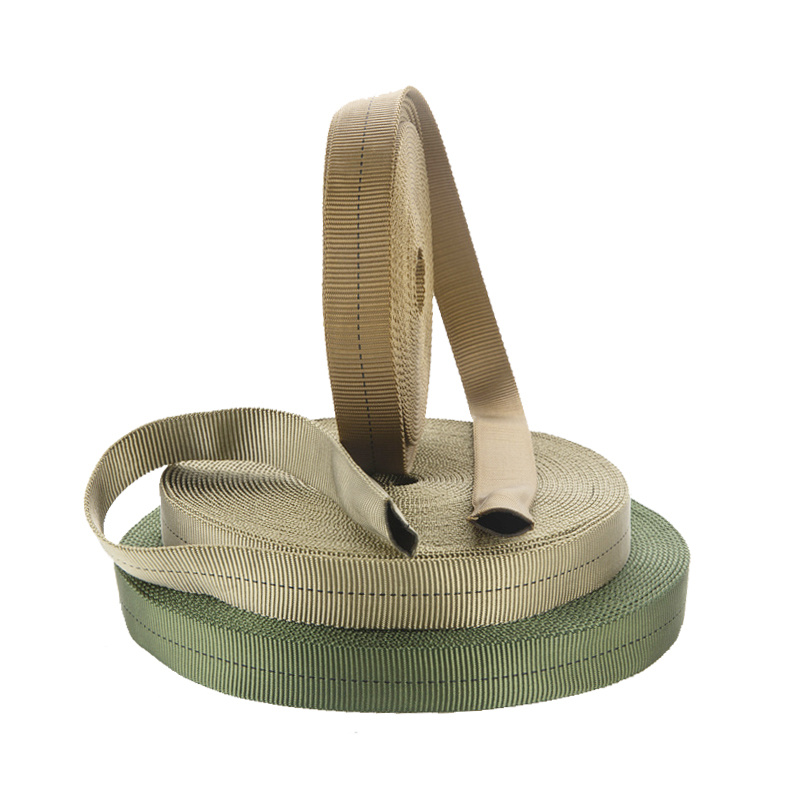How to Select the Right Military Webbing for Your Needs
How to Select the Right Military Webbing for Your Needs
In the world of military applications, webbing serves a crucial role in various equipment and gear. Selecting the right military webbing is not merely a matter of choice; it's about understanding your specific needs and the characteristics of different types of webbing available in the market. By the end of this article, you will be equipped
Jul 08,2025

How to Select the Right Military Webbing for Your Needs
In the world of military applications, webbing serves a crucial role in various equipment and gear. Selecting the right military webbing is not merely a matter of choice; it's about understanding your specific needs and the characteristics of different types of webbing available in the market. By the end of this article, you will be equipped with the knowledge to make an informed decision that aligns with your requirements.
Table of Contents
- What is Military Webbing?
- Types of Military Webbing
- Sizes and Strength Ratings of Military Webbing
- Application of Military Webbing
- Factors to Consider When Selecting Webbing
- Maintenance and Care of Military Webbing
- Common Mistakes to Avoid When Choosing Military Webbing
- FAQs
What is Military Webbing?
**Military webbing** is a robust, durable strip of material used in various military applications, including backpacks, harnesses, and tactical gear. It is designed to withstand extreme conditions and stresses, making it an essential component for soldiers and outdoor enthusiasts alike. The webbing can be made from different materials and comes in various widths, strengths, and colors to fit specific needs. Understanding how to select the right type of webbing can greatly enhance performance and safety in critical situations.
Types of Military Webbing
There are several types of military webbing, each with its unique properties and applications. The following sections delve into the most commonly used materials.
Nylon Webbing
**Nylon webbing** is one of the most popular types of military webbing. Renowned for its strength and durability, nylon offers excellent resistance to abrasion, UV rays, and mildew. The lightweight nature of nylon makes it a suitable choice for combat gear where weight savings are crucial. Additionally, nylon webbing has a high tensile strength, making it ideal for load-bearing applications. However, it may not be suitable for extreme heat situations since nylon can melt if exposed to high temperatures.
Polyester Webbing
**Polyester webbing** is another widely used material in military applications. While it is slightly heavier than nylon, polyester offers superior resistance to UV rays and has a lower stretch factor. This characteristic makes polyester webbing an excellent choice for applications where maintaining shape and size is critical. Additionally, polyester has good resistance to water and is less likely to absorb moisture, making it an ideal choice for wet environments.
Cotton Webbing
**Cotton webbing** is less common in military applications but still holds relevance in certain scenarios. Known for its softness and flexibility, cotton webbing is comfortable to handle and wear. It is often used in tactical gear where comfort is paramount. However, cotton is less durable than nylon and polyester and may not be the best choice for high-stress applications. Its tendency to absorb water makes it unsuitable for wet conditions, but it can be useful for applications where breathability is needed.
Sizes and Strength Ratings of Military Webbing
When selecting military webbing, size and strength are critical factors to consider. Webbing typically comes in various widths ranging from 1 inch to 2 inches and may be available in custom sizes as well. The width of the webbing often determines its load-bearing capacity.
**Strength ratings** of military webbing are typically measured in pounds or kilograms, indicating the maximum load the webbing can safely support. It is essential to match the strength rating with the intended application to ensure safety and functionality. Common strength ratings include:
- **1,000 lbs** (450 kg) - Suitable for light to moderate loads.
- **2,000 lbs** (900 kg) - Ideal for tactical gear and heavier applications.
- **3,000 lbs** (1,360 kg) - Used in specialized military equipment.
Always check the manufacturer's specifications to understand the functional limits of the webbing you intend to use.
Application of Military Webbing
Military webbing finds its application in various gear and equipment, enhancing functionality and durability. Here are some notable applications:
Combat Gear
In combat scenarios, webbing is crucial for tactical vests, belts, and harnesses. It enables soldiers to carry essential gear like ammunition, medical supplies, and communication devices securely and efficiently.
Backpacks and Rucksacks
Webbing is commonly used in the design of military backpacks and rucksacks. It allows for attachment points for additional gear, enabling soldiers to customize their loadout based on mission requirements.
Climbing and Rescue Operations
In climbing and rescue operations, webbing plays a vital role in safety harnesses and rescue straps. Its strength ensures safety during high-altitude activities, while its lightweight nature makes it easy to carry.
Outdoor Activities
For outdoor enthusiasts, military webbing is popular in camping, hiking, and survival gear. Its durability and resistance to environmental factors make it an ideal choice for outdoor applications.
Factors to Consider When Selecting Webbing
When choosing military webbing, several factors should guide your decision to ensure you select the right product for your needs:
1. Purpose and Application
Identify the primary purpose of the webbing. Whether for tactical use, rescue operations, or outdoor activities, understanding the application will guide your material and strength selection.
2. Weight and Portability
Consider how weight may affect your overall load. If you are engaged in long-duration activities, lightweight webbing materials such as nylon can reduce fatigue.
3. Environmental Conditions
Evaluate the environmental conditions you will be operating in. If you expect exposure to UV rays, moisture, or extreme temperatures, select webbing that can withstand these conditions.
4. Durability Requirements
Assess the durability needs based on the expected wear and tear. Heavy-duty applications require stronger materials, while lighter usage may allow for more flexibility in material choice.
5. Budget Constraints
Lastly, while quality is paramount, consider your budget. High-quality webbing may come at a premium, but investing in durable materials can save costs in the long run.
Maintenance and Care of Military Webbing
Proper maintenance and care are essential to prolonging the lifespan of your military webbing. Here are some tips to keep your webbing in top condition:
1. Regular Inspection
Conduct regular inspections for signs of wear and damage. Look for fraying, discoloration, or any other indicators that the webbing may need replacement.
2. Cleaning
Clean your webbing according to the material specifications. Generally, a mild detergent and warm water will suffice. Avoid harsh chemicals to prevent damage.
3. Drying
Ensure your webbing dries completely before storing it. Avoid direct sunlight and high heat sources, as they can degrade the material over time.
4. Storage
Store webbing in a cool, dry place away from direct sunlight. Proper storage prevents unnecessary wear and ensures it stays ready for use.
Common Mistakes to Avoid When Choosing Military Webbing
Making an informed decision is crucial, and avoiding common pitfalls can enhance your selection process:
1. Ignoring Manufacturer Specifications
Always adhere to the manufacturer's specifications regarding strength ratings and usage guidelines. Ignoring these can lead to safety hazards.
2. Overlooking Environmental Factors
Failing to consider the environmental conditions can lead to premature degradation of the webbing. Always choose a material that is suitable for the expected environment.
3. Choosing the Wrong Width
Selecting an inappropriate width for your application can compromise the effectiveness of the gear. Be sure to match the width with the intended use.
4. Neglecting Maintenance
Ignoring the maintenance of your webbing can lead to unexpected failures. Establish a maintenance routine to prolong the life of your gear.
FAQs
1. What is the difference between nylon and polyester webbing?
Nylon webbing is lighter and has a higher tensile strength, while polyester offers superior UV resistance and lower stretch. The choice depends on the intended application.
2. Can I use military webbing for civilian purposes?
Yes, military webbing is versatile and can be used for civilian outdoor activities, survival gear, and tactical applications.
3. How do I determine the appropriate strength rating for my needs?
Assess the load requirements of your application and choose webbing with a strength rating that comfortably exceeds that load.
4. Is cotton webbing suitable for heavy-duty applications?
Cotton webbing is less durable and not recommended for high-stress applications. It is better suited for lighter uses.
5. What maintenance is required for military webbing?
Regular inspection, cleaning, drying, and proper storage are essential to maintain the integrity of military webbing.
Conclusion
Selecting the right military webbing is a critical decision that impacts performance, safety, and functionality. By understanding the different types of webbing, their applications, and the factors to consider, you can make an informed choice that meets your specific needs. Whether you are gearing up for a mission, an outdoor adventure, or a rescue operation, the right military webbing will ensure you are prepared for any situation. Prioritize quality, performance, and care to enhance your gear's longevity and effectiveness.
Related Posts
Contact Us
E-mail:
Phone/WeChat:
Factory Address:
No. 601 ShiXing Road, Jimei District, Xiamen, 361024, China







